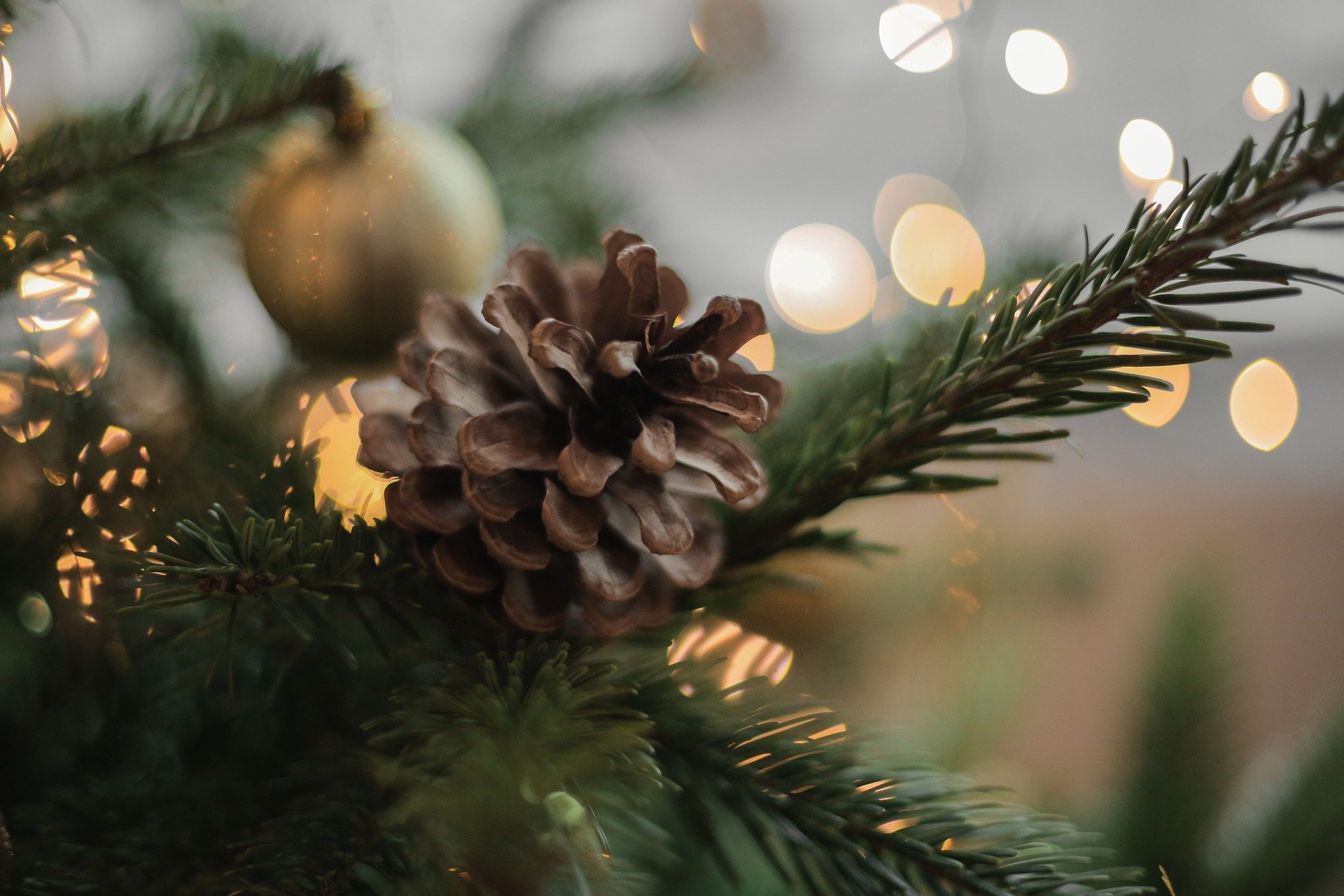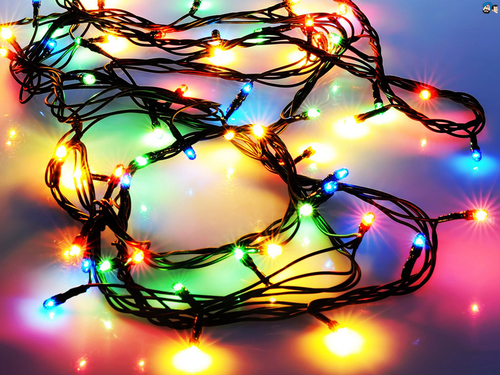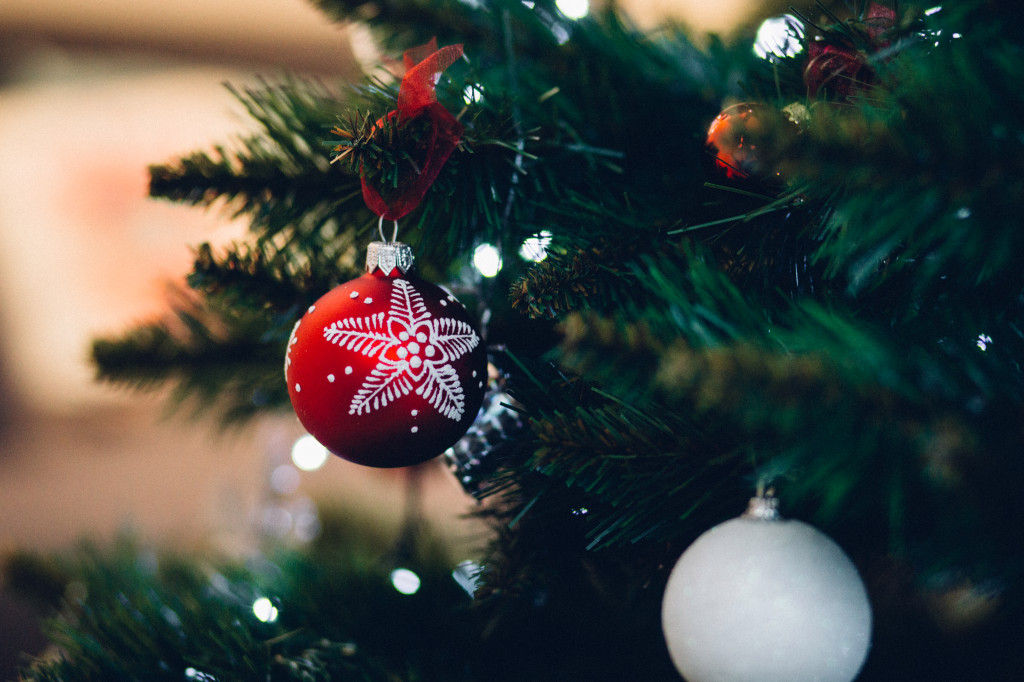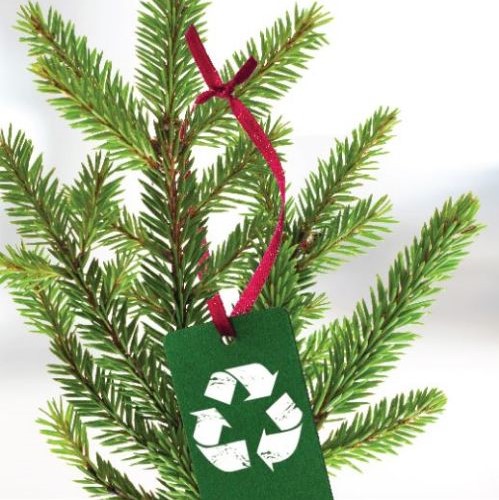
Dear Eartha, I love my Christmas tree and decorating with lights this time of year. What are their environmental impacts? Do I need to consider skipping some of my favorite holiday traditions?
Don’t worry, there’s no need to nix your beloved tree or lights. Yet, it’s important to recognize that the season of joy brings some serious environmental impacts. I’m excited to share some of my favorite ways to reduce those impacts without sapping all the fun from holiday traditions.
Holiday lights

Observable from space, our festive holiday lights make the average American suburb 50 percent brighter between Thanksgiving and New Years Day. The Department of Energy estimates that Americans burn 6.6 billion kilowatt-hours annually using holiday lights. That’s enough electricity to power more than 800,000 homes for a year. Equally astounding, we stand to save a tremendous portion of this energy use through a couple simple strategies.
We recommend replacing all holiday lights with LED technology once your current lights fail. LED lights use a quarter of the energy as standard incandescent bulbs and last far longer. Modern LED’s come in a wide variety of shapes and colors and even produce that classic warm glow we’ve grown to love. The marginal price increase for LEDs is oftentimes earned back in the form of energy savings within 1-2 years of use during the holiday seasons.
Too often, people utilize stranded lights as an extension cord for their lighting projects. Oftentimes, excessive lighting can be avoided by utilizing extension cords in areas where lighting is not necessary or desired. Utilizing lighting timers and programmable smart strips is another significant way to cut down on excessive lighting. A programmable smart strip looks like any ordinary power strip, but can be programmed to turn lights on only during specific hours. It’s recommended to only run holiday lights between sunset and midnight at the latest.
Scented Candles
While you may love the glow of a candle or the scent of gingerbread around your holiday home, consider the type of candles you buy. Avoid petroleum-based paraffin wax candles this holiday season. Consider burning candles made from soy, beeswax or natural vegetable-based wax. Additionally, a single-wick candle can contribute around 15 parts per million of carbon monoxide into your indoor environment. That’s not a life-threatening amount in small doses; However, with multiple candles burning in confined spaces, your festive mood lighting could be doing a lot more harm than good.

Christmas Trees
Despite the joy these trees bring us every year, the Christmas tree has sparked some heated debate with regards to environmental impact and ethicality. Manufactured out of PVC (polyvinyl chloride), artificial trees are not recyclable and will last forever in a landfill. Through the manufacturing process, PVC emits carcinogenic compounds into our atmosphere and can continue to pollute our indoor air quality after we bring a tree home.
Furthermore, the needles on artificial trees can sometimes be treated with lead in the manufacturing process. Touching or even vacuuming around the base of an artificial tree can pose health concerns and degrade indoor air quality. If you decide to invest in an artificial tree for the long-term cost savings and low-maintenance, we suggest purchasing a non-PVC model that was manufactured in the USA.
On the other side of the spectrum, if a real tree is properly disposed of, several studies have found that there’s an environmental advantage for supporting the real tree industry. Christmas trees are a commercially farmed agricultural commodity with roughly 350 million trees currently growing on farms across the US. Every year, nearly 30 million trees are harvested from this supply and replanted on an annual cycle. Consider consulting a forestry expert at the local ranger station to determine if you can cut down your own tree from the national forest. In some cases, it’s a benefit to the health of our forest to responsibly thin out certain trees.
For an artificial tree to have a lower environmental impact to real trees, you’ll need to hang on to that artificial tree for at least a decade. While both artificial and real trees have their disadvantages, the real Christmas tree is still where we tend to lean. If you want to be a holiday season all-star, forgo the notion of an indoor Christmas tree. Consider planting a new tree outside your home that can be decorated and enjoyed from a distance every holiday season.
Holiday Recycling
Between Thanksgiving to New Year’s, Americans throw away 25% more trash than any other time of year. In just two months, this extra waste amounts to 25 million tons of garbage sent to the landfill. Luckily in Summit County, our towns typically support the proper disposal of Christmas trees every year. Christmas trees can be brought to conveniently located disposal sites at each town and are usually open up to a month after Christmas day.
In Breckenridge, residents’ trees are accepted at the Stillson Lot off Wellington road, near the stables. You can also drop off trees at Trent Park in Silverthorne, the marina lot in Frisco, Dillon Town Hall, and the Summit County Resource Allocation Park (SCRAP).

For artificial trees, consider reselling yours online if it’s in good condition. You can also donate artificial trees to a local non-profit, church, or charity, or give it away to a friend. Consider re-purposing your tree – use it to make wreaths or a garland.
Got a bad string of lights? Recycle them at Lowes in Silverthorne during business hours. The collection bin is located next to the customer service desk. If you’ve been upgraded to a new TV or stereo this holiday season, old electronics and even string lights can be recycled as electronic waste at the SCRAP in Keystone.
For more information on holiday recycling, visit our page at https://highcountryconservation.org/holiday-recycling-tips/
As you can see, there’s no need to abandon your favorite holiday traditions. Get creative and you’ll be giving the best gifts to our planet this holiday season.
